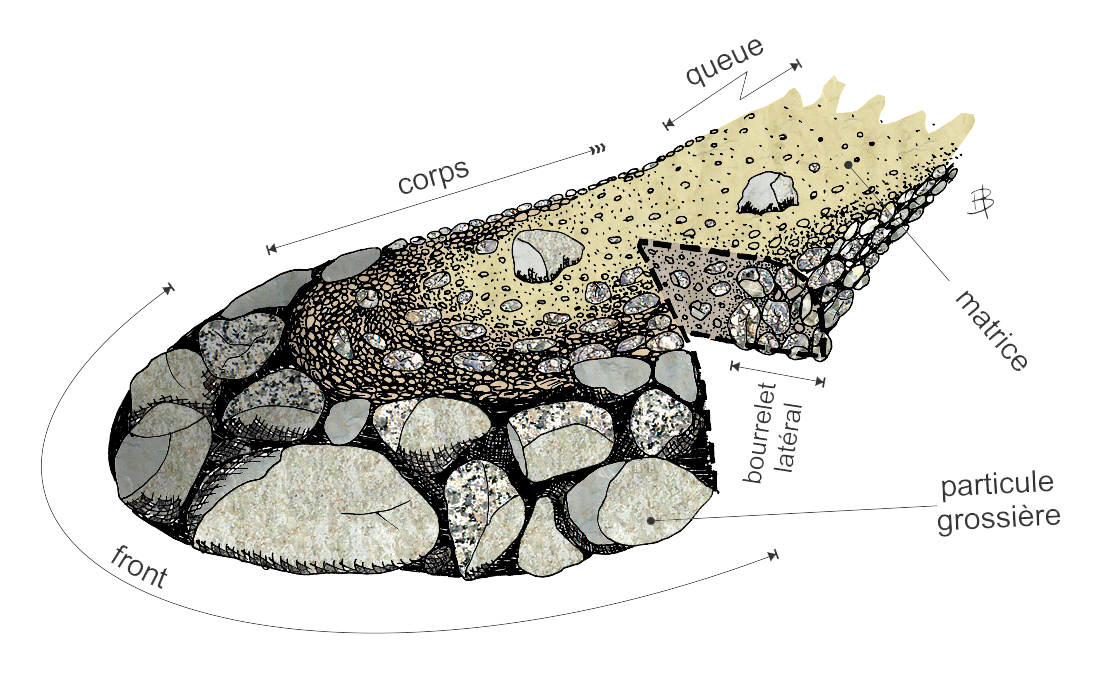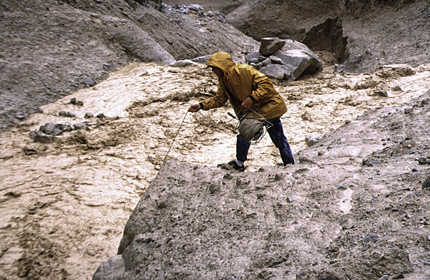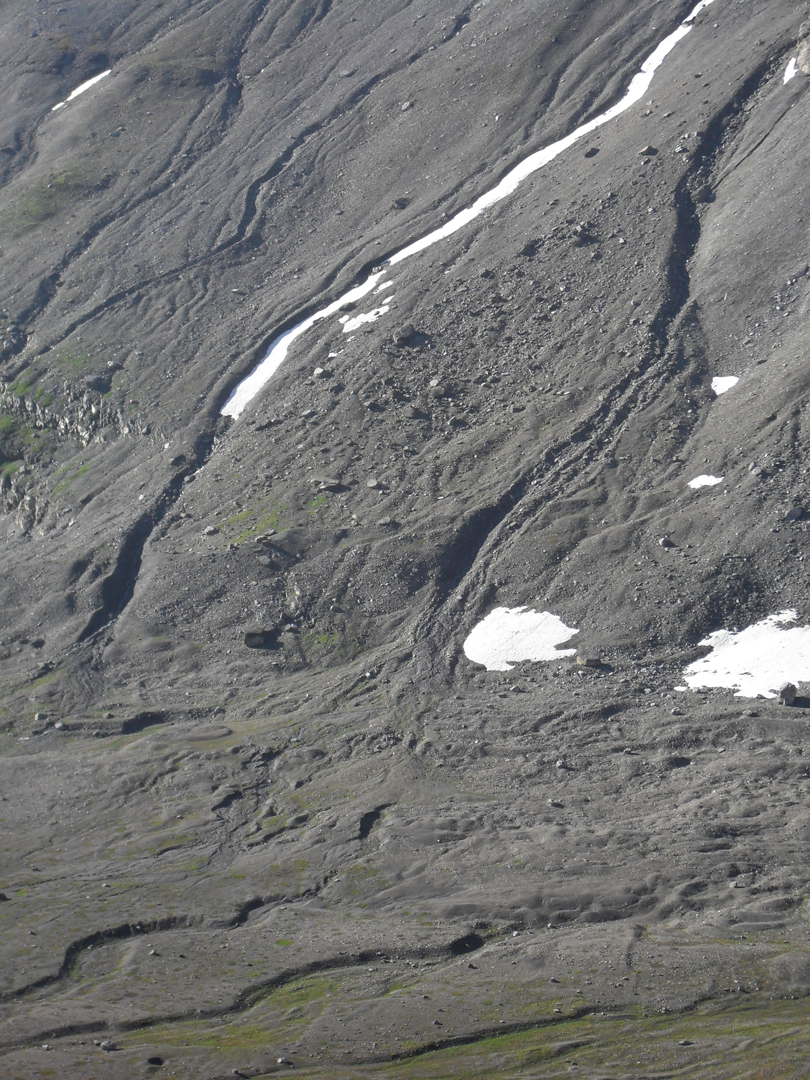
The mixture
Debris flows are a fluid flow of a mixture of debris (mostly rocky but trunks are also possible) and water. The size of the rocky debris ranges from clay aggregate (< 20 μm, clay particles being ~2 μm) to boulder (several meters). Seen as a "homogenous" fluid at the macro-scale. this composition develops a bulk density of around 2000 kg/m³. Launch sometime at more than 10 m/s, it allows creating large inertial impact forces, therefore extensive damages. This density creates among others a buoyancy force allowing transporting heavy elements.

A wide range of phenomena
DSM develops a long experience dealing with debris flows focusing on a mechanical approach. Similarly, to the Linné's classification for life species, mechanistic approach allows a classification of the phenomenon indicating which type of model (or embedded constitutive laws) should be used and a worldwide understanding across experts. It follows, with this in mind, that debris flow may be seen as synonymous with mudflows but also GLOF (Glacial Lake Outburst Flood) and some flash floods (when highly loaded in sediments). With this regard, it is interesting to look in different language how this phenomenon is defined (in general with a compound name).

The flow behaviour
Due to different processes, at different scale, the flow of such mixture heavily differs from the one of pure water. Scientist says that debris flows are a non-Newtonian fluid (water being Newtonian). It implies that the relationship between applied stress and deformation, as well as between applied stress and apparent viscosity, are nonlinear. It results in very counter-intuitive behaviour of the flow, and therefore in the needs of using specific models.
